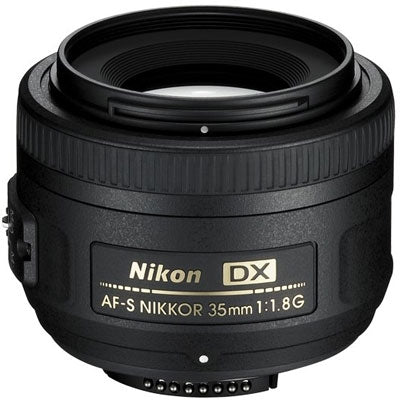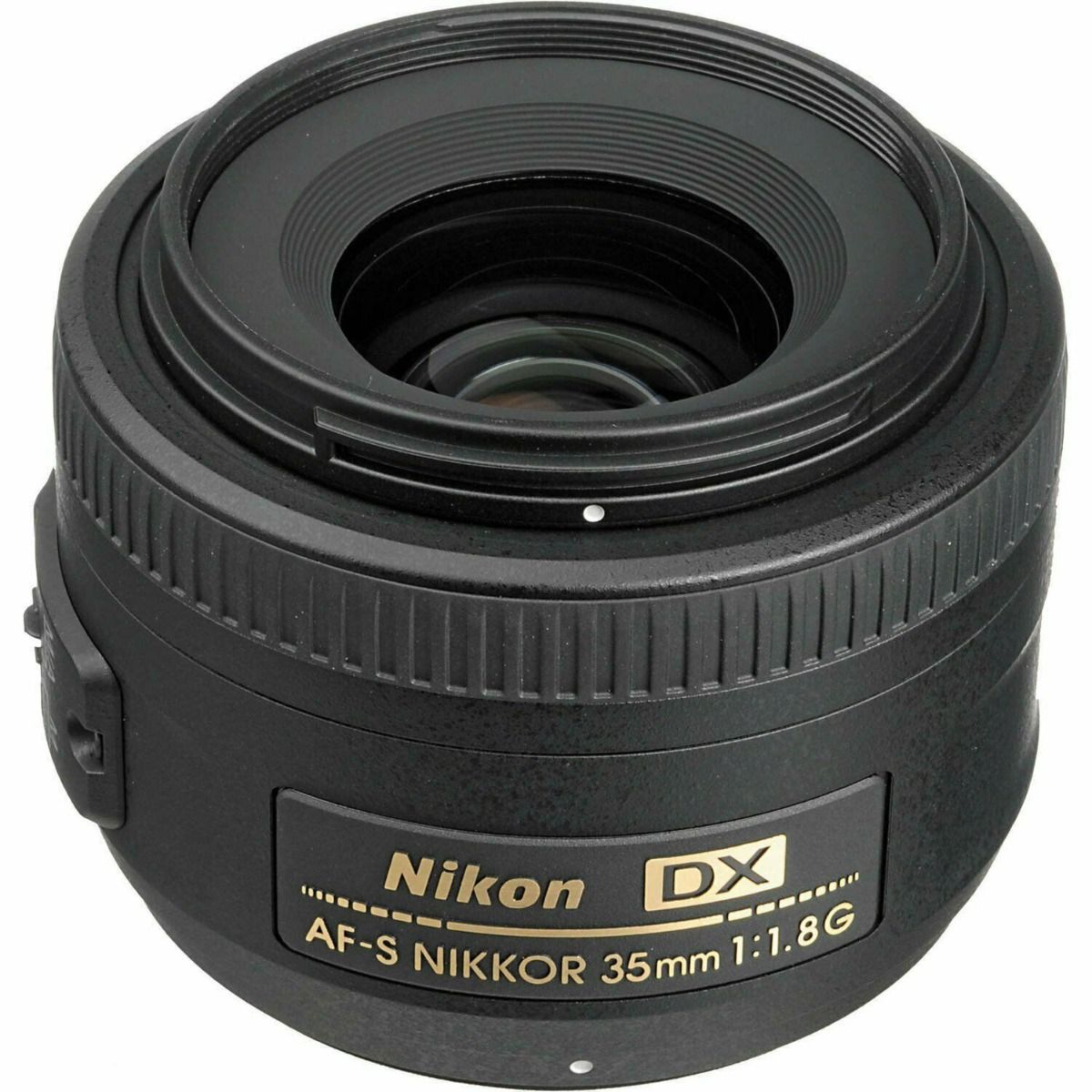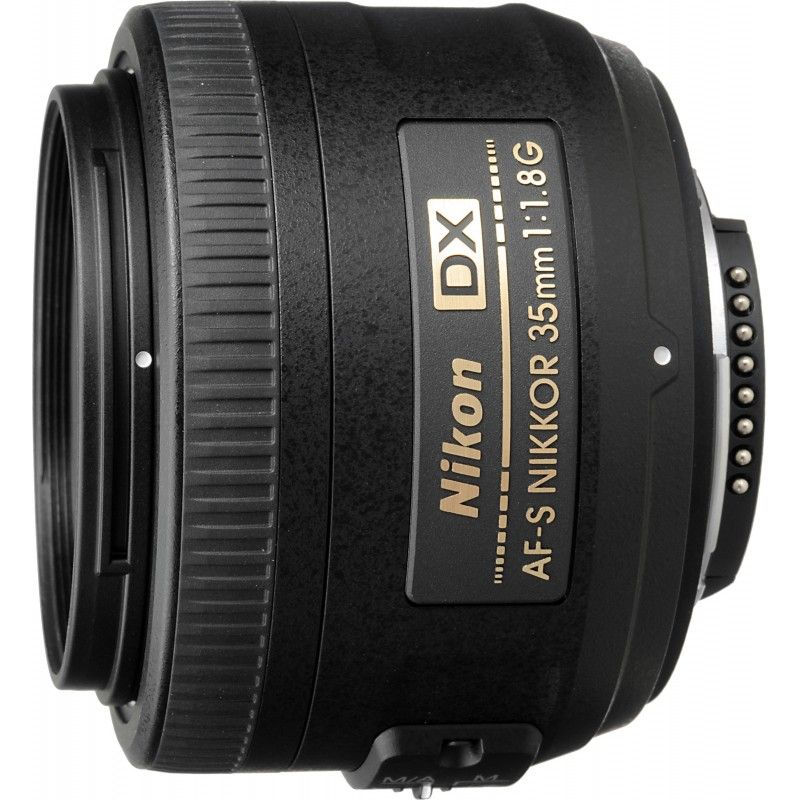Product Description
Nikon AF-S DX Nikkor 35mm f1.8 lens
This wide aperture DX NIKKOR lens has a fast maximum aperture which delivers a bright viewfinder experience and subtle background blurring with a shallow depth of field. Incorporating the NIKKOR Silent Wave Motor (SWM) for quiet accurate focus operation, the Nikon 35mm f1.8 prime is ideal for shooting landscapes or taking discreet snapshots, with a picture angle approximately that of the human eye.
When used with a DX-format digital SLR camera, the picture angle is the 35mm equivalent focal length of 50mm. Featuring a rounded seven-blade diaphragm opening, the Nikon 35mm AF-S f1.8 prime lens makes out of focus elements appear more natural. The AF-S NIKKOR 35mm f1.8G has two focus modes; M/A (manual override autofocus) and M (manual focus). In addition, the lens features a rubber seal to minimise moisture ingression around the mount

The Nikon 35mm f1.8 prime lens can focus down to 0.3 metres / 0.98 ft.
Included with the lens are a 52mm snap-on front lens cap LC-53, rear lens cap LF-1, bayonet hood HB-46 and flexible lens pouch CL-0913.















